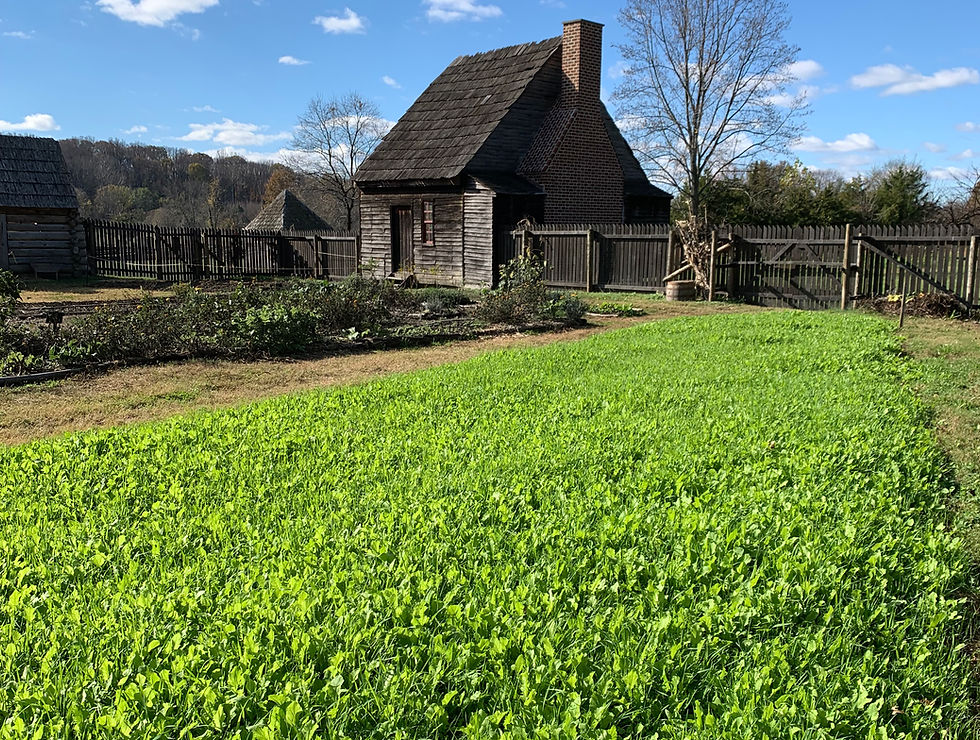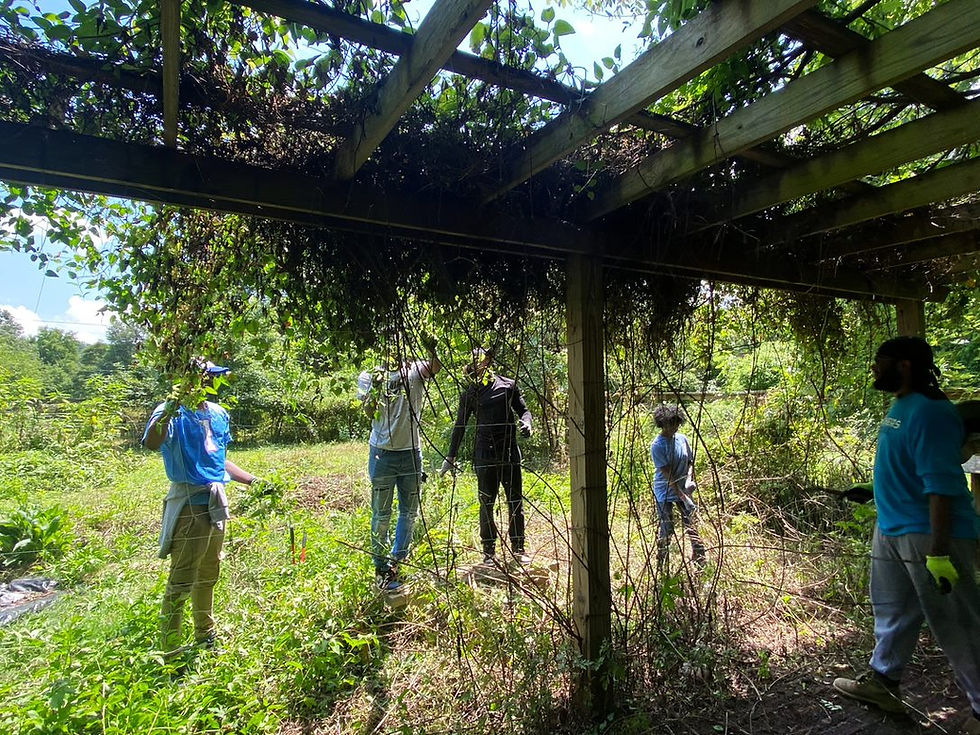Ecosystem Farming
- Accokeek Foundation

- Oct 7, 2013
- 2 min read
by Rebecca Cecere Seward
The Ecosystem Farm’s purpose is to be an example of sustainable agriculture in order to grow food and maintain and contribute to the health of the larger ecosystem surrounding it. This may be easily derived from the farm’s name, but it also is a method of land-working that is wholly different from how much of our country’s acreage is managed. Our farming practice is notable as compared to much modern agricultural thought in that it considers the system of the farm, a web. This agro-ecosystem is a devised and natural series of interactions and relationships and compels us to envision the future of the farm, not only its immediate needs.
Life for me often happens in shapes, the product of a visual kinesthetic learning style. The farm is a series of priorities happening spatially, an overlapping system of circles and squares, orbing to the front of my mind as they require care. I have tried to cultivate a perpetual awareness of this moving, interacting three-dimensional puzzle, because most problems on the farm are connected to other working parts. If a plant is dying in a row, I ask: “how is the soil here? Are there bugs around this plant? Does it have a disease? What’s the weather been like? What do I have planted close by?” This is all in an effort to understanding any and all causes for the wilting crop, in order that I might improve that field or that area for the next season. This is my version of systems-thinking, a practice that has served me well as an organic farmer.
Where organic farming essentially differs from large conventional farming is that this awareness of overlapping relationships allows us to find multiple causes for one problem. In many conventional farming systems, a crop is considered for its immediate inputs and its immediate problems. Take corn, for example. It takes a certain ratio of nitrogen, phosporous and potassium, which can be calculated and applied to meet that corn’s nutritional needs. The corn is then planted in a mathematical equation that includes estimating market-driven considerations, using a very exact planter. The subsequent weeds are addressed using targeted herbicides while the particular bugs are sprayed using calculated pesticides. The result is a uniform product, corn ears all the same, and the need for this process to be repeated over acre after acre, year after year.
What this linear thinking about farming does not account for is the fact that, in organic systems, every piece of the farm and its environs contributes to the overall mosaic and its ideal conditions. Soil fluffiness and flora are fostered rather than force-fed, using cover crops, application of organic matter, and careful management. We try to grow our good soil, which can allow nutrients to become available to crops. We try to find other methods of managing pests and weeds, using plants that repel pests or encourage those pests’ predators, and weeding in many other ways. In this way, we are thinking long-term, paying respect to the other beings under our feet, in the river, and above the ground. Sustainable agriculture also provides the impetus to further the web of beings we influence to include our community, of which our eaters are an integral part of our ecosystem. (I’m not talking about the groundhogs.)
Click here for more Field Notes







